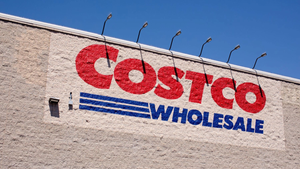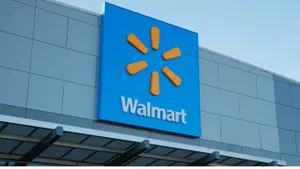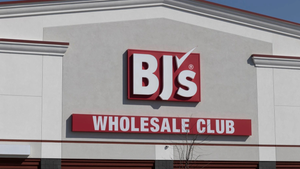Global Warning: Tesco Focuses on the HomefrontGlobal Warning: Tesco Focuses on the Homefront
Tesco may be reconsidering its international development as it refocuses on its core U.K. market. “Our business outside the U.K. is as big as any of our domestic peers is inside the U.K. An extraordinary business has been built in just a very short period of time.” — Philip Clarke, Tesco’s chief executive officer SN's 2012 Top 25 Worldwide Food Retailers
May 28, 2012
U.S. observers of Tesco’s struggles with its Fresh & Easy Neighborhood Market format in the Southwest might find this hard to believe, but the company is actually considered one of the most accomplished food retailers in the world when it comes to international expansion.
Cheshunt, England-based Tesco PLC — the dominant supermarket operator in the U.K. — has blazed a trail to significant market share in several Asian and European markets, mostly by sticking to a strategy that was the polar opposite of the way it approached its entry into the U.S.
“The U.S. is one of the few markets they’ve gone into organically,” explained David Gray, retail analyst at London-based Planet Retail. “Usually what they do is buy someone that has a reasonably strong position in the market, often a hypermarket operator. They learn about the market a bit, then they launch smaller formats — supermarkets and convenience stores. They usually either go in with a joint venture or an acquisition.”
 That strategy has worked to tremendous advantage in markets like South Korea, Tesco’s largest market outside the U.K., where the company generated about $8.4 billion in sales in the recently ended fiscal year. It entered through a hypermarket joint venture with Samsung in 1999 and now operates about 458 locations — both hypermarkets under the Homeplus (right) banner and small-format Homeplus Express stores (below).
That strategy has worked to tremendous advantage in markets like South Korea, Tesco’s largest market outside the U.K., where the company generated about $8.4 billion in sales in the recently ended fiscal year. It entered through a hypermarket joint venture with Samsung in 1999 and now operates about 458 locations — both hypermarkets under the Homeplus (right) banner and small-format Homeplus Express stores (below).
Tesco operates in 13 markets outside of the U.K., including Japan, where it is selling its operations, marking one of its few international failures. The total international business generated about $37.2 billion in sales last year, or about a third of the company’s total revenues for the year. Tesco’s international operations — despite losses of about $241 million at Fresh & Easy — achieved their highest profit totals ever, at just over 1 million British pounds, or about $1.74 billion U.S.
 “Our business outside the U.K. is as big as any of our domestic peers is inside the U.K.,” said Philip Clarke, Tesco’s chief executive officer, in an interview following the recent release of the company’s year-end results. “An extraordinary business has been built in just a very short period of time, and not just by me but my predecessors who made those brave decisions.”
“Our business outside the U.K. is as big as any of our domestic peers is inside the U.K.,” said Philip Clarke, Tesco’s chief executive officer, in an interview following the recent release of the company’s year-end results. “An extraordinary business has been built in just a very short period of time, and not just by me but my predecessors who made those brave decisions.”
Clarke cited in particular the company’s potential to drive international expansion via Internet-based retailing.
Tesco.com generated revenues of almost $4 billion last year in the U.K., he pointed out, where it is the country’s largest online grocer.
“We are able to take all of the technology, all of the assets that have been created, and put them around the group,” he said, noting that the company recently launched an online offering in Prague in the Czech Republic, and is expected to launch soon in Warsaw, Poland.
SN Poll: What will become of Tesco's Fresh & Easy chain in the U.S.?
Nick Miles, senior business analyst at IGD, London, noted that global retailing is “becoming increasingly multi-channel.”
“As the world’s largest online grocer, Tesco is well placed to capitalize by utilizing its online best practices and increasing digital capability. In Asia, in particular, there is plenty of future potential growth for Tesco via the online channel.”
Questions Arise About International Operations
Lately, however, some analysts and investors have begun to question whether Tesco can continue to drive the international success it had previously enjoyed. Declining comparable-store sales in its core U.K. market have forced the retailer to refocus its resources and attention on its core operations there.
Morgan Stanley analysts Edouard Aubin and Gillian Robb, in a report issued earlier this month, said they see potential trouble ahead for much of Tesco’s international operations. The challenges Tesco faces, they said, include increased competition for its core hypermarket format from nonfood category killers and from online sales; declining birth rates in some key markets; unfavorable legislation favoring smaller players; and the increasing strength of some local competitors, among other factors.
 The analysts calculate that 80% of Tesco’s selling space outside the U.K. is occupied by hypermarkets, and that even if the company opens no more hypermarkets for the next three years, the format would still represent 71% of the company’s international square footage. (At right is a look inside a Homeplus hypermarket in South Korea.)
The analysts calculate that 80% of Tesco’s selling space outside the U.K. is occupied by hypermarkets, and that even if the company opens no more hypermarkets for the next three years, the format would still represent 71% of the company’s international square footage. (At right is a look inside a Homeplus hypermarket in South Korea.)
“Given that we expect the socio-demographic trends (aging population, lower household size, lower birth rate, etc.) which have impacted Tesco’s operations over the past five years to get worse, not better, this is a significant issue for a format mainly targeting large families,” the report stated.
Tesco CEO Clarke, speaking in a conference call with investors to discuss year-end results, said the company was shifting increasingly to smaller formats in its international expansion plans, although hypermarkets are still a key vehicle, particularly in markets like China. He also said the company could look at opening smaller hypermarkets.
“The future of the hyper may well be smaller,” he said. “It may be food- and service-focused with a tight general merchandise assortment and a strong clothing offer. But in that slimmed down form, I believe there’s plenty of life and growth in it yet.”
In South Korea, which accounts for 25% of Tesco’s international sales, a new law took effect last month forcing big-box retailers to close for two days each month, a move designed to protect the nation’s beloved independent retailers. Morgan Stanley estimated the new law could impact hypermarket sales by 2% to 3% over the next 12 months.
Similar legislation was considered in Thailand but has yet to be passed.
Another challenge Tesco faces is the growth of discount formats in Eastern Europe. Both hard discounters and discount hypermarkets like Kaufland are growing market share rapidly in markets like Poland, Hungary, Czech Republic and Turkey, Morgan Stanley noted.
Miles of IGD, while bullish on Tesco’s international growth potential, noted that the company is facing some challenges both at home and abroad.
“Growth in Ireland and Hungary were particularly challenging for Tesco last year,” he said. “A maturing store network combined with economic slowdown means that this year Tesco will be scaling back space development and focusing on improving existing store performance.”
IGD is forecasting that Tesco will achieve annual growth of 6.8% between 2011 and 2015, still the strongest growth of any of the four largest global food retailers (see Page 11 for the Top 25 Worldwide Food Retailers list).
“Tesco aims to be the No. 1 or 2 player in every market in which it operates,” Miles said. “It already holds this position in many Asian markets, and this should continue to help drive its growth going forward.”
Favoring Emerging Markets
For the most part, Tesco has opted to enter emerging markets in Central Europe and Asia, bypassing more developed neighboring countries in Western Europe (other than the Republic of Ireland, its third-largest international market behind South Korea and Thailand).
“If you look at other global retailers like Carrefour and Auchan, they have gone into a lot of markets as a smaller player, but what Tesco has done is gone into a smaller number of markets but focused on becoming one of the dominant players in those markets,” said Gray of Planet Retail. “They have strong positions in most of their markets, and that has been one of the keys to their success.”
Neil Stern, senior partner at Chicago-based retail consulting firm McMillan Dootlittle, explained that by entering emerging markets with hypermarkets, Tesco was able to gain scale quickly, then fill in with smaller stores.
“The U.S. is different for so many reasons,” he noted. “It’s obviously a very mature market, and they generally have not done a lot in mature markets. And generally they have led with the hypermarket, so [Fresh & Easy] was a departure for several reasons from the Tesco playbook.”
Although Tesco has not yet entered any Latin American markets, Stern said he thinks it’s possible the company could consider buying some of Carrefour’s assets there.
“I think we will see some global shifts in coming years,” he said.
He said he thinks Tesco might have to re-prioritize its international investments in the coming years.
“When the U.K. was as strong as it has been, they had the freedom to invest in these other markets,” Stern explained. “As things get tougher at home, they are being questioned more aggressively about their ability to spend money in some of these markets.
“It might force them to look at their priorities,” he said. “Even though they have a lot of capital, they don’t have unlimited capital.”
Although Clarke recently reaffirmed his support for the U.S. business, Stern noted that the Fresh & Easy operations in the U.S. are “essential to any kind of those discussions” about prioritizing its investments.
Miles of IGD said he sees the U.S. business eventually turning profitable, in part due to its self-distribution and in-house food production capabilities.
“Tesco’s U.S. business has a higher level of vertical integration compared to many of its other international businesses,” he said. “Although these cost more to start up, they should drive better margins in the long term.”
Gray of Planet retail said he expects Tesco to remain in the U.S., despite the losses in the first few years.
“My general opinion is they stand to lose too much if they exit,” he said. “They would get some money back from selling the stores, but with the stores moving toward profitability, and with the main issue being the overhead, I don’t see them exiting the market.”
Tesco, he said, is “often overambitious in store openings,” citing targets that exceed actual results. He cited China as a recent example where the company under-delivered on its own projections.
Stern also noted that Tesco is “never a single-format operator in any market,” indicating that the company could seek to diversify its format portfolio beyond its two small-footprint banners.
“In the U.S., they have Fresh & Easy and now Fresh & Easy Express, and if Tesco is serious about the U.S. market, we would fully expect them at some point to open additional formats,” he said. “I think they have to prove Fresh & Easy before management gets the latitude to open additional formats.”
Plenty of Potential Outside U.K.
Gray said that while he sees Tesco’s growth pace slowing on the international front in the coming years, the company still has plenty of growth potential outside the U.K..
“They are still growing very rapidly in international, but at a slightly slower pace than in previous years,” Gray said.
He noted that the company has pulled back on capital expenditures, to about $4.7 billion, down from previous expenditures of nearly $6 billion, as it focuses on restoring industry-leading growth to its home market.
Gray said he sees longer-term opportunities “in markets such as Vietnam, where they can draw on synergies with Thailand.”
Thailand is another of Tesco’s most successful international markets, growing rapidly after it entered in 1998. Operating there as Tesco Lotus, the company has just over 1,000 stores and market share of 13%, with revenues of about $5 billion in the last year.
 The company has been in China since 2004, and now operates 124 hypermarkets there, in the Shanghai area and elsewhere along the Eastern Seaboard (right). The stores there generated about $2 billion in revenues last year.
The company has been in China since 2004, and now operates 124 hypermarkets there, in the Shanghai area and elsewhere along the Eastern Seaboard (right). The stores there generated about $2 billion in revenues last year.
Despite the potential many observers see for Western retailers in China, Tesco not been able to grow as fast there as it had previously projected, Gray pointed out.
Stern of McMillan Doolittle said China remains a strong potential growth market for Tesco.
“They are putting a lot of money into China, but like it is for their competitors, China is an investment market,” Stern explained. “You have to invest without getting much return in order to get ahead of the curve.”
He said he believes Tesco is eyeing China as its potential No. 2 market some day behind the U.K.
Gray said that given Tesco’s challenges in the U.K. and elsewhere, he does not expect the company to enter any new countries in the near term.
“I don’t anticipate any new entries for several years,” he said. “The CEO specifically mentioned that they weren’t looking at doing any flag planting at the moment.”
“I think there are a lot of opportunities internationally, but I think that will take a back seat to revitalizing the U.K. business,” Gray explained. “The U.K. business is enormous for them, accounting for about two-thirds of their sales and two-thirds of their profits. You can’t have an operation of that size experiencing slight declines.”
In the earnings call with investors discussing year-end results, Clarke said the company was committed to revitalizing its U.K. operations.
“The recession hit Tesco hard, and it was longer and it was deeper than we’d anticipated,” he said. “We did well to maintain our growth through most of it, but too heavy a load was placed on the U.K. to support the group. We have to confront this uncomfortable truth, and that’s really the background to the decisive action that we have taken in the last few months. There was a need for change.”
Strategic Shift to Core U.K. Business
The effort to focus on the core U.K. business marks a sharp strategic shift for Tesco, Gray explained.
“It’s a different strategy for them really — what they have historically focused on is diversification and broadening their offering,” he said. “They have been going into different formats, and going into financial services.”
Tesco even launched a used car website recently, he pointed out, although that was quickly shut down.
“Their strategy has been to diversify more and more and more, and capture more and more of their customers’ discretionary spending,” Gray said. “Now there’s been kind of a shift going on towards the existing core operations, the existing core stores, and the food. At the end of the day, the customers come to you primarily for food, and they might buy other things, and they might buy financial services. But that comes after you have built a strong relationship in grocery.
“They have focused on diversification for about 10 years, on new markets, and new businesses, and they have lost sight of the core grocery business.”
Sidebar: Tesco Reinvests in Core U.K. Market With Six-Point Plan
Stung by weak comparable-store sales in its core U.K. market, where it generates two-thirds of its sales, Tesco recently unveiled a six-point plan to revitalize its operations there.
It plans to invest 1 billion British pounds — about $1.6 billion U.S. — to improve the in-store experience in several ways, after years of driving profit growth faster than sales.
“We were simply taking more out than we were putting in, and that’s not sustainable,” said Philip Clarke, chief executive officer, in a conference call with analysts at the end of the company’s recent fiscal year.
The six-point plan involves:
• An investment of more than $300 million to add 8,000 staff, focusing on the fresh departments and the company’s larger stores, and an extensive training program.
• A focus on renovations rather than new-store development, targeting 430 stores this year to improve the look and feel, using warmer colors and materials, better lighting, and improved sight lines and signage.
• Improving prices and overall value, targeting the right mix of everyday prices, promotions, coupons and loyalty offers.
• Rethinking the assortment, with a focus on relaunching all of the company’s private labels with higher quality and new labels. The 24-month program, affecting 8,000 products, will begin with the low-end Tesco Value line. The effort will also involve more localization of the stores’ offerings.
• Changes in branding and marketing, beginning with an ad-agency review, and spearheaded by Tim Mason, the chief marketing officer for the company and CEO of the Tesco’s Fresh & Easy operations in the U.S.
• Incorporating the Internet better into the company’s overall business in part by expanding the nonfoods available online and offering customers the option to pick up their orders at local Express stores.
Tesco International by Market
Tesco operates in 13 markets outside of the U.K., including Japan, where it is selling its operations, and India, where it is a supplier and retail advisor to Star Bazaar stores operated by the retail arm of the Tata group. The total international business generated about $37.2 billion in sales last year, or about a third of the company’s total revenues for the year.
• China — Tesco entered China in 2004 through the acquisition of a 50% stake in the Hymall chain. It now has 124 hypermarkets there and has also developed shopping centers — anchored by its hypermarkets — under the Lifespace brand. The company generated about $2 billion in sales in China last year.
• Malaysia — Tesco entered the market in 2002 and operates in partnership with a local conglomerate Sime Darby, which owns a 30% interest in Tesco’s Malaysian operations. Tesco now has 45 stores that generated about $1.4 billion in sales last year. The company also supplies product to smaller retailers in the country.
• South Korea — The largest of Tesco’s international markets, Tesco operates 458 hypermarkets and small-format stores that generated about $8.4 billion in revenues last year. It entered South Korea in 1999 through a joint venture with Samsung. Following the 2008 acquisition of E-Land, Tesco became the second-largest retailer in the market.
• Thailand — Tesco operates in Thailand as Tesco Lotus. It entered the market in 1998 through a joint venture with Charoen Pokphand, whose stake Tesco has since acquired. Tesco Lotus operates 1,092 stores that generated about $5.1 billion in sales last year.
• Czech Republic — Tesco has grown in this market through a series of acquisitions. It now has 322 stores, including some department stores, that generated sales of about $2.4 billion last year. Tesco entered the market in 1996 through the acquisition of K-Mart stores.
• Hungary — This was Tesco’s first international market, which it entered by acquiring a local operator in 1995. Tesco now operates 115 hypermarkets in Hungary and 90 smaller-format stores, which generated sales of $2.8 billion last year.
• Ireland — Tesco entered Ireland in 1997 with the acquisition of Associated British Foods. It operates in Ireland much like it does in the U.K., and like the U.K., it is their country’s No. 1 food retailer. Its 137 stores had sales of almost $3.9 billion last year.
• Poland — Tesco acquired a 31-store chain in Poland in 1997, and now operates 412 stores with annual revenues of $3.6 billion.
• Slovakia — Tesco generated $1.8 billion in sales in Slovakia last year through 120 retail stores. It entered the market in 1996 through the acquisition of K-Mart Department Stores.
• Turkey — Tesco trades under the name Kipa in the Turkish market, where it began operating in 2003 through the acquisition of five Kipa stores. It now has 148 locations in 24 cities, generating annual sales of just over $1 billion.
• U.S. — Tesco began opening Fresh & Easy in the Western U.S. in 2007, and now has 185 locations generating sales of about $1 billion last year. Unlike almost every other international market, Tesco chose to enter the market “organically,” without an acquisition or a joint-venture partner.
Source: Tescoplc.com and SN research
About the Author
You May Also Like




